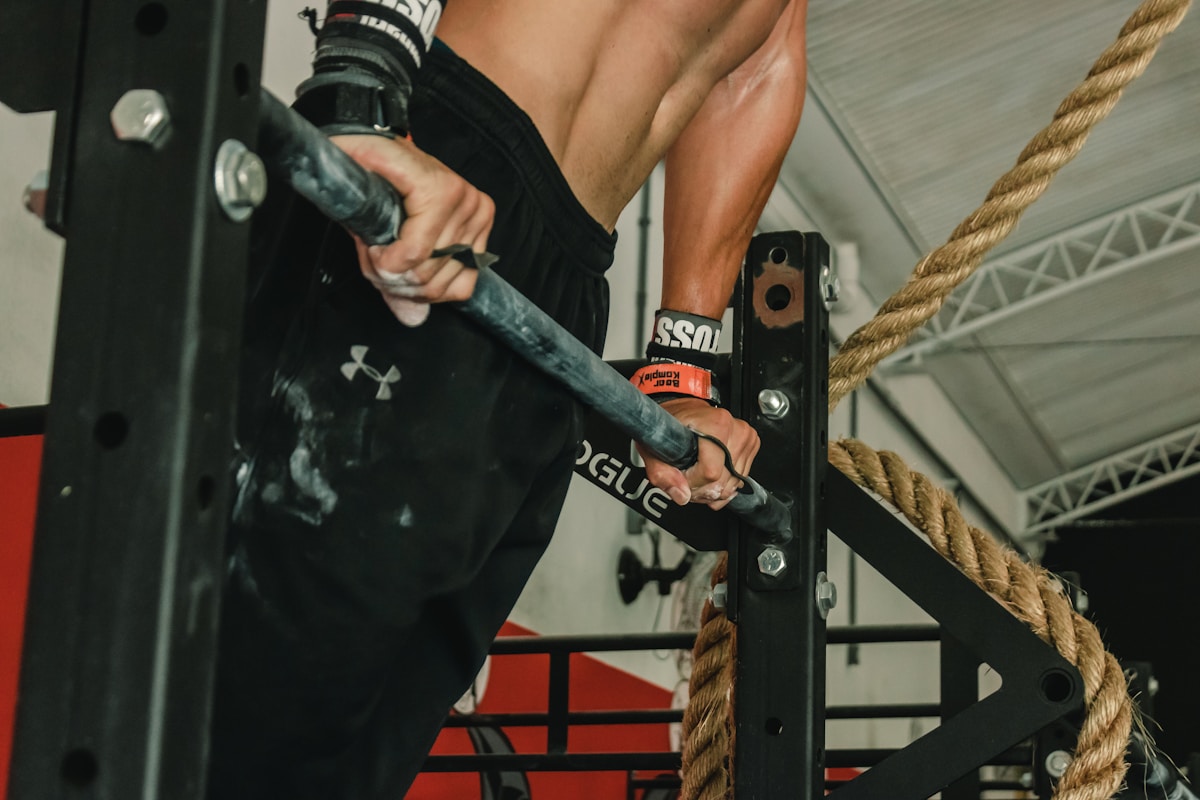The Role of CrossFit in Preventing Common Sports Injuries
Understanding the Role of CrossFit: How it Can Help Prevent Sports Injuries
Understanding the Role of CrossFit: How it Can Help Prevent Sports Injuries
CrossFit has gained popularity not only for its challenging workouts but also for its potential to enhance injury prevention in various sports and physical activities. By incorporating functional movements, varied exercises, and high-intensity workouts, CrossFit addresses several key factors that contribute to injury prevention.
One of the primary benefits of CrossFit is its focus on developing overall strength and conditioning. Through a combination of weightlifting, cardiovascular training, and bodyweight exercises, CrossFit aims to create a well-rounded athlete capable of performing a wide range of physical tasks. This comprehensive approach helps build a strong foundation, which can reduce the risk of injuries caused by muscular imbalances or weaknesses.
Additionally, CrossFit places a strong emphasis on proper form and technique. Coaches and trainers guide participants in performing exercises with correct alignment, ensuring that movements are executed safely and efficiently. This attention to detail minimizes the risk of overloading certain joints or muscles, reducing the likelihood of acute or overuse injuries.
Moreover, CrossFit’s focus on functional movements, such as squats, deadlifts, and overhead presses, helps improve mobility, stability, and coordination. By training movements that mimic real-life activities, CrossFit enhances an athlete’s ability to move efficiently and safely in various sports and daily life.
In summary, CrossFit plays a vital role in preventing sports injuries by promoting overall strength, proper form, and functional movement patterns. By building a strong foundation, improving technique, and enhancing mobility and coordination, CrossFit can help athletes reduce the risk of injury and perform at their best in their respective sports and physical activities.
Strengthening the Foundation: Building Injury Resilience through CrossFit Training
Strengthening the Foundation: Building Injury Resilience through CrossFit Training
CrossFit training focuses on building a solid foundation of strength, stability, and mobility, which plays a crucial role in preventing common sports injuries. By targeting key muscle groups and enhancing overall fitness, CrossFit helps athletes develop the necessary physical attributes to withstand the demands of their respective sports.
One of the primary ways CrossFit strengthens the foundation is through compound movements and functional exercises. By engaging multiple muscle groups simultaneously, these movements help develop overall strength and stability, which are essential for injury prevention. Exercises like squats, deadlifts, and overhead presses target major muscle groups and promote balanced development, reducing the risk of muscle imbalances and compensatory movements that can lead to injuries.
CrossFit also emphasizes core strength, as a strong core provides stability and helps transfer power efficiently between the upper and lower body. A stable core contributes to better posture, balance, and control during sports activities, reducing the risk of falls and sudden movements that can lead to injury.
Furthermore, CrossFit training incorporates exercises that improve mobility and flexibility. By performing dynamic stretches and mobility exercises, athletes can increase their range of motion and reduce the risk of muscle strains and joint injuries. Improved flexibility also allows athletes to move more efficiently and with better technique, further reducing the risk of injury.
In summary, CrossFit’s focus on building a strong foundation through compound movements, core training, and mobility exercises plays a significant role in strengthening the body and enhancing injury resilience. By developing strength, stability, and mobility, athletes can minimize the risk of common sports injuries and perform at their best in their chosen sports or physical activities.
Injury Prevention Techniques in CrossFit: Proper Form and Technique as Key Factors
Injury Prevention Techniques in CrossFit: Proper Form and Technique as Key Factors
Proper form and technique are fundamental in CrossFit to prevent sports injuries and ensure safe and effective training. CrossFit places a strong emphasis on maintaining correct body alignment, movement patterns, and execution of exercises, which significantly reduces the risk of injury.
One of the primary injury prevention techniques in CrossFit is the emphasis on learning and practicing proper form. Coaches and trainers guide participants to execute movements with precision, paying close attention to alignment, posture, and body mechanics. By prioritizing form over intensity, CrossFit promotes safe and controlled movements, reducing the risk of sudden movements or improper loading that can lead to injuries.
Furthermore, CrossFit encourages gradual progression and scaling of workouts based on individual abilities and fitness levels. This approach ensures that athletes build a solid foundation and gradually increase intensity, allowing the body to adapt and minimize the risk of overexertion or strain.
Additionally, the use of proper equipment is essential for injury prevention in CrossFit. From supportive footwear to appropriate weights and accessories, using the right equipment enhances safety and helps maintain proper form. Coaches educate participants on selecting suitable equipment and ensuring its proper use to optimize performance and reduce the risk of injury.
CrossFit also promotes a culture of accountability and community support, where participants are encouraged to listen to their bodies and communicate any discomfort or pain to trainers. This allows for timely adjustments, modifications, or rest periods to prevent potential injuries and promote overall well-being.
In conclusion, injury prevention techniques in CrossFit prioritize proper form, technique, and equipment usage. By focusing on safe movement patterns, gradual progression, and fostering a supportive community, CrossFit minimizes the risk of sports injuries and helps athletes train effectively and injury-free.
Addressing Muscle Imbalances: Corrective Exercises in CrossFit for Injury Prevention
Addressing Muscle Imbalances: Corrective Exercises in CrossFit for Injury Prevention
Muscle imbalances are a common risk factor for sports injuries, and CrossFit addresses this concern by incorporating corrective exercises into training programs. These exercises aim to correct muscular imbalances, improve joint stability, and reduce the likelihood of injury.
CrossFit workouts often include exercises that target specific muscle groups, helping to develop balanced strength throughout the body. By focusing on both primary and accessory muscles, athletes can address any imbalances that may exist. For example, exercises like single-leg movements, unilateral exercises, and specific isolation exercises help to strengthen weaker muscle groups and promote overall symmetry and balance.
In addition, CrossFit training includes functional movements that engage multiple muscle groups simultaneously, promoting coordinated strength and stability. Compound exercises like squats, deadlifts, and overhead presses require balanced activation of various muscles, helping to prevent dominance or overreliance on certain muscle groups.
CrossFit also incorporates mobility and flexibility exercises to address muscle imbalances and improve joint range of motion. Stretching and mobility work, such as foam rolling, dynamic stretches, and targeted mobility exercises, help to release tight muscles, improve flexibility, and correct imbalances that may lead to overuse injuries.
Furthermore, coaches and trainers in CrossFit programs are knowledgeable in identifying muscle imbalances and prescribing specific exercises to address them. They can provide guidance and instruction on proper form and technique to ensure that corrective exercises are performed effectively and safely.
By incorporating corrective exercises into CrossFit training, athletes can proactively address muscle imbalances, improve joint stability, and reduce the risk of sports injuries. This approach promotes overall balance, strength, and resilience, enhancing athletic performance and long-term well-being.
Mobility and Flexibility: Enhancing Joint Health and Range of Motion in CrossFit
Mobility and Flexibility: Enhancing Joint Health and Range of Motion in CrossFit
Mobility and flexibility are vital components of injury prevention in CrossFit. By prioritizing joint health and range of motion, athletes can move with greater ease, reduce the risk of strains and sprains, and optimize their performance in CrossFit workouts.
CrossFit training incorporates specific mobility exercises that target various joints and muscle groups. These exercises aim to improve the flexibility of key areas such as the hips, shoulders, spine, and ankles. By increasing mobility in these areas, athletes can achieve better body mechanics and execute movements with proper form, reducing the strain on joints and muscles.
Flexibility exercises are also essential in CrossFit to improve muscle elasticity and prevent muscle imbalances. Dynamic stretches, static stretches, and proprioceptive neuromuscular facilitation (PNF) techniques are commonly employed to enhance flexibility. These exercises help lengthen muscles, increase the range of motion around joints, and improve overall muscle balance.
CrossFit workouts often incorporate exercises that promote functional mobility and flexibility, such as lunges, shoulder dislocates, hip openers, and spinal twists. These movements target specific areas of the body and allow athletes to maintain or improve joint mobility, ensuring proper movement patterns and reducing the risk of injury.
Additionally, foam rolling and self-myofascial release techniques are frequently used in CrossFit to address muscle tightness and improve tissue quality. By applying pressure to specific muscle groups, athletes can release tension, improve blood flow, and enhance overall flexibility and mobility.
In conclusion, mobility and flexibility play a crucial role in injury prevention in CrossFit. By incorporating targeted mobility exercises, flexibility training, and self-myofascial release techniques, athletes can enhance joint health, increase range of motion, and reduce the risk of injuries, ultimately improving their performance and longevity in CrossFit.
Conclusion
Prioritizing mobility and flexibility in CrossFit training is essential for injury prevention and optimal performance. By incorporating targeted exercises, stretches, and foam rolling techniques, athletes can enhance joint health, increase range of motion, and improve overall movement patterns. Investing time and effort into improving mobility will not only reduce the risk of injuries but also enhance athletic performance and longevity in CrossFit. So, don’t overlook the importance of mobility and flexibility in your training regimen – unlock your body’s full potential and take your CrossFit journey to new heights.



